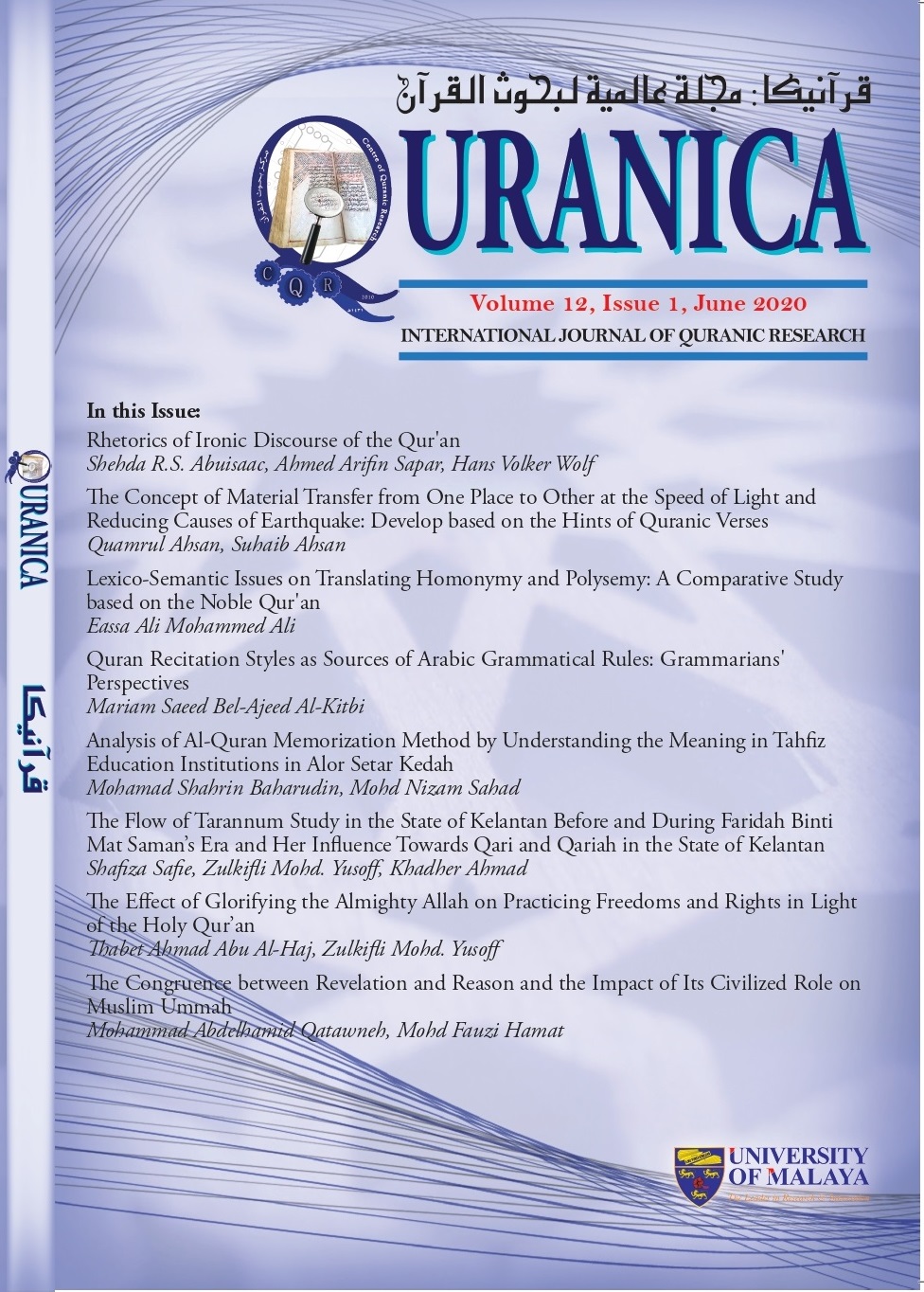Rhetorics of Ironic Discourse of the Qur'an
Main Article Content
Abstract
This paper first investigates types and functions of verbal irony in the Qur’an, and second extracts and interprets the multi-meanings and interpretations of all dissociative thoughts hidden behind speaker’s (s’) intention. Qualitative research method is used in interpreting the data samples. Speech Acts Theory of Irony by Henk(1990) is used to categorize all ironic texts; Allusional Pretence Theory by Nakamura (1995) is used to help extract and interpret the dissociative thoughts resulting from irony interface with other figures of speech. The study shows that in many cases irony as a prominent figure of speech interacts with metaphor, hyperbole, metonymy, understatement, parody, paradox, humor and satire. This paper claims that syntactic (grammatical) variations and semantic interpretations play a major role in determining the intended meaning of the speaker’s utterance, which influences and therefore conveys all other emotive meanings ( i.e. cultural, psychological, social and connotative meanings) resulting from the complex process of intersecting irony with other figures of speech in one utterance. The study concludes that sarcasm is the most frequent type of irony found in the Qur’an, followed by parody, paradox and satire etc. The study shows that ironic utterances and expressions are open to a wide range of interpretations affected by situational and contextual environment as well as discourse parameters. This thus shows that irony is inter-linguistically, culturally and contextually diverse in its potential realizations and forms.
Downloads
Article Details
Disclaimer
QURANICA makes every effort to ensure the accuracy of all its contents. However, opinions, discussions, views and recommendations are expressed in this journal do not necessarily reflect the official policy of QURANICA or views of its editors or publishers. Therefore, QURANICA and its publishers will not be liable for any controversy may be arisen. The journal reserves the right, at its sole discretion, to change its terms and conditions of publications.
Copyright
It is a condition of publication that manuscript submitted to the journal have not been published, accepted for publication, nor simultaneously submitted for publication elsewhere. By submitting a manuscript, the author(s) agrees that copyright for the article is transferred to the publisher, if and when the manuscript is accepted for publication.
